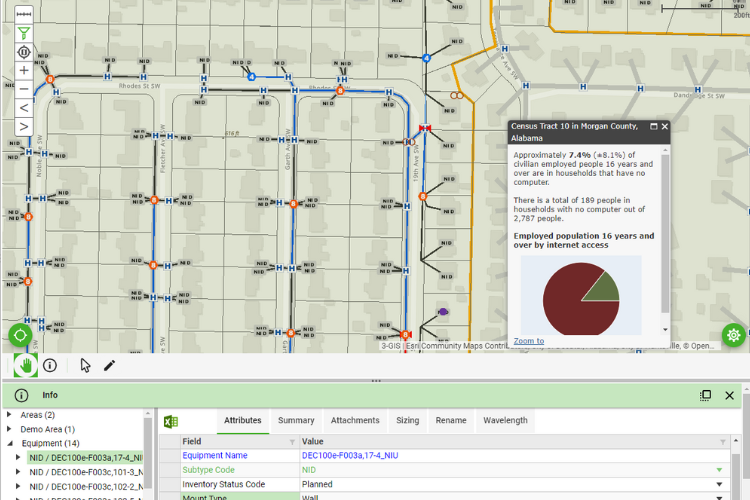What speeds do you offer? That's the question telecoms are being asked daily. These speed demands are quickly increasing from 1- 5MB/s to 50MB/s, 100M B/s, and in many areas 1G B/s. Companies who aren't advancing their networks to provide faster services are quickly being out maneuvered in their own markets. Competition is increasing and telecoms are felling the pressure from wireless internet service providers and other telecom companies who can provide better services at faster speeds, and sometimes even lower prices.
In order to stay competitive, carriers should be using tools built on an architecture that can adapt as quickly as new technologies are introduced. Network management software must be able to model changes that are introduced frequently by equipment manufacturers. Planning tools have to be flexible enough to handle changes in splitter technologies, splice types and cable configurations so your organization can keep up.
Companies are also seizing the opportunity to compete before the game even begins - in areas like reducing the time to construction. By reducing redundant data entry, applying for permitting more quickly, and gathering field input directly from the field in near real-time rather than manually entering information from field notes - your organization can drastically reduce the time it takes to get new network in place to service customers. Companies that can build networks faster and cheaper will replace the legacy providers in an area regardless of their incumbency. In this scenario, the first company to the market is the winner.
At 3-GIS we continually invest in tools that can automate network designs and provide quality constructible output quickly. We're supporting the latest technologies in our designs, and providing field tools to capture data quickly and in such a way that eliminates the need for it to be reentered.
Now, we've heard it said that field crews will not go away from paper maps, but that's only because paper has been faster and easier - until now. With a better option that makes their jobs easier, and benefits others on the project, we're seeing successful replacement of paper with innovative and intuitive mobile tools. And we're seeing result that benefit the entire organization when this change is made.
In the end, the choice is simple. Companies who adapt and embrace the technology to help them plan, design, and build their fiber networks faster than their competition win. Adapt or die? Which will you choose?
If you are interested in learning how our tools are being used to reduce the design / build process of fiber networks please give us a call.



